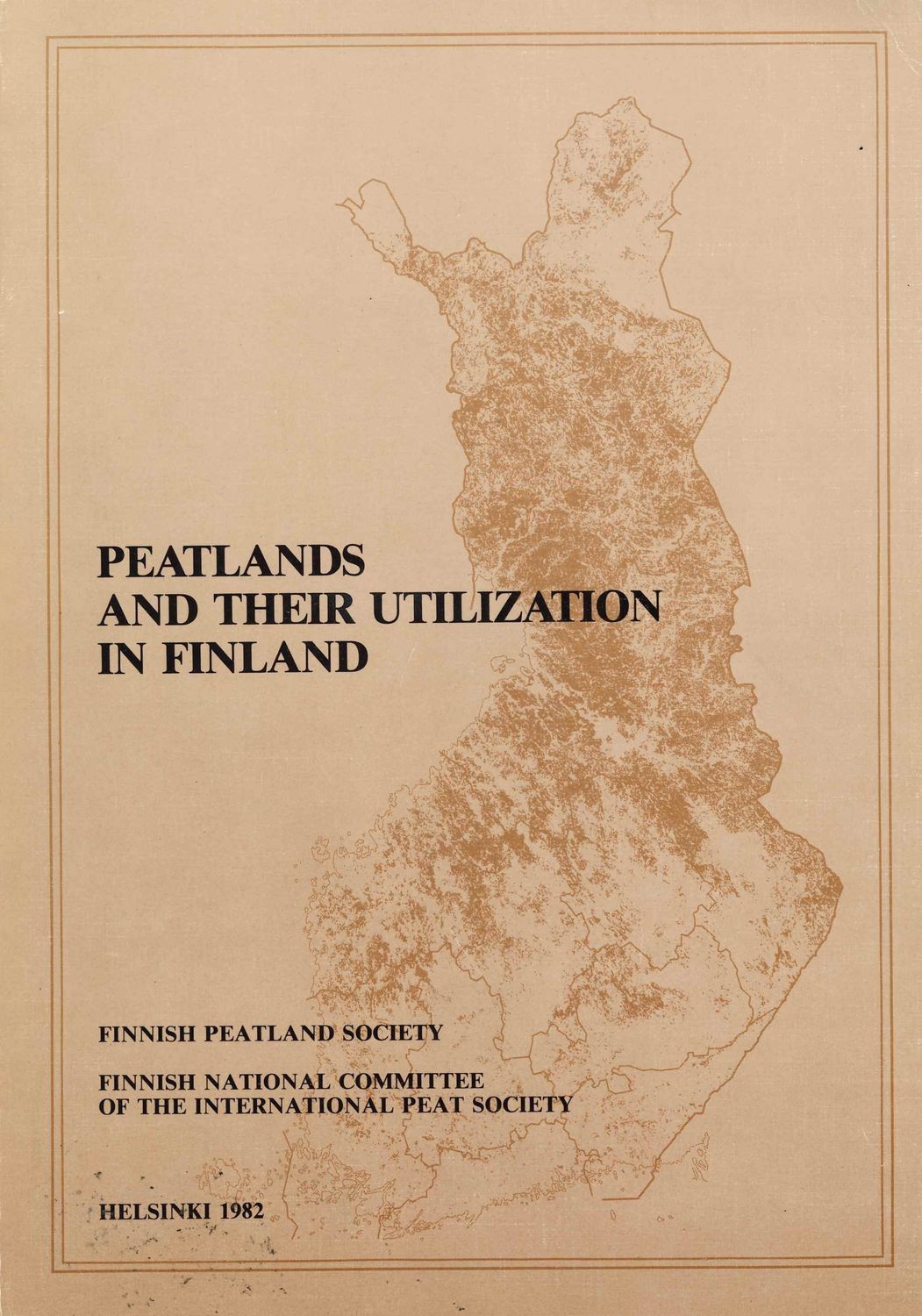Peatlands and their Utilization in Finland 1982
9,90 €
In stock: 13 available
1
Save this product for later
Peatlands and their Utilization in Finland 1982
Product Details
Editor: Jukka Laine
Published by Finnish Peatland Society, IPS National Committee
Helsinki 1982
ISBN 951-99402-9-4
CONTENTS
- Introduction (Erkki Kivinen)
- Extension of peatlands
2.1. Area, distribution and ownership (Eero Paavilainen)
2.2. Peat resources (Eino Lappalainen) - Peatland classification
3.1. Mire vegetation and site types (Leo Heikurainen & Pekka Pakarinen)
3.1.1. History of peatland classification in Finland
3.1.2. The Finnish system of peatland site types
3.1.3. Trophic series and nutrient conditions of mire types
3.1.4. Drained peatlands
3.2. Mire complex types in Finland (Rauno Ruuhijärvi)
3.2.1. The concept of mire complex type
3.2.2. Ombrotrophic bog complex types
3.2.3. Aapamires and palsamires
3.2.4. Orohemiarctic and oroarctic mires - Classification and some physical and chemical characteristics of peat soils
4.1. Peat in situ (Kimmo Tolonen)
4.1.1. Peat types
4.1.2. Types of peatland formation
4.1.3. Peat stratigraphy
4.1.4. Net accumulation
4.2. Main physical properties of peat soils (Juhani Päivänen)
4.2.1. Physical structure of peat
4.2.2. Water retention
4.2.3. Hydraulic conductivity
4.3. Main chemical characteristics of peat soils (Martti Kurki)
4.3.1. Main nutrients and reaction
4.3.2. Trace elements
4.3.3. Exchange capacity
4.3.4. Organic composition - Agricultural utilization of peatlands (Arvi Valmari)
5.1. Introduction
5.2. Physical properties of peat
5.3. Chemical properties of peatlands
5.4. Cultivation value of peatlands
5.5. Cultivation techniques - Peat as a growing medium in horticulture (Viljo Puustjärvi)
6.1. Introduction
6.2. Theoretical model of an ideal growing medium
6.3. Sphagnum moss peat as an ideal growing medium
6.4. Endurance of structure
6.5. Programmed peat basin culture - Peatland forestry (Leo Heikurainen)
7.1. Extent of forest drainage
7.2. Forest drainage techniques
7.3. Silvicultural measures involved
7.4. Results of forest drainage
7.5. Environmental effects of forest drainage - Peat as an energy source in Finland (Pertti Härme)
8.1. Finnish peat reserves
8.2. The share of peat in the Finnish energy supply
8.3. Finnish fuel peat producers
8.4. Fuel peat consumers in Finland
8.5. Problems associated with peat production and usage
8.6. Future usage of peat
8.7. Governmental measures in Finland - Peat production (Antti Suoninen)
9.1. Development and extent of peat industry
9.2. Manpower
9.3. Peat product standards
9.3.1. Fuel peat standards
9.3.2. Horticultural peat standards
9.4. Establishment of the peat site
9.4.1. Survey of peatlands
9.4.2. Site headquarters, roads and tracks
9.4.3. Drainage
9.4.4. Clearing and levelling
9.4.5. Fire prevention at peat production sites
9.4.6. Protection of watercourses at peat production sites
9.5. Peat production techniques
9.5.1. Milled peat production
9.5.2. Sod peat production
9.5.3. Other peat production methods
9.6. Storage
9.6.1. Stockpile sites
9.6.2. Stockpiling
9.6.3. Covering and control of stockpiles
9.7. Peat transportation
9.8. The Finnish approach to peat fuel supply nationwide (Raimo Sopo)
9.9. Turveruukki Oy, peat producer in northern Finland (Juhani Arppe)
9.10. Peat production machines manufactured in Finland - Peat combustion
10.1. Combustion technology (Anssi Kalmari)
10.1.1. History of peat fuel usage in Finland
10.1.2. Peat-burning plants in the 1980’s
10.1.3. Plant technology and costs
10.1.4. Grate-firing
10.1.5. Combined pulverized fuel and grate-firing
10.1.6. Flue gas drying and pulverized fuel burning
10.1.7. Fluidized-bed combustion
10.1.8. Conventional pulverized-fuel firing
10.2. Emissions from peat-fired power plants (Erkki Häsänen)
10.2.1. Introduction
10.2.2. Use of peat as a fuel
10.2.3. Properties of peat
10.2.4. Emissions from peat combustion compared to coal and oil combustion - Peat products (Erkki Ekman)
11.1. General development
11.2. Peat coke, activated carbon, sorption peat
11.3. Peat briquettes and pellets
11.4. Horticultural peat products
11.5. Peat gas - Industrial peat research (Dan Asplund)
12.1. A general synopsis of peat research in Finland
12.2. Peat research at VTT
12.2.1. General view
12.2.2. Peat production techniques
12.2.3. Handling techniques and pretreatment of peat
12.2.4. Combustion and combustion plant techniques
12.2.5. Chemical conversion of peat
12.2.6. Environmental research - Mire preservation in Finland (Rauno Ruuhijärvi)
13.1. Need for mire preservation
13.2. Procedure of site selection
13.3. The national mire preservation programme
13.4. Realization of the preservation programmes - Legislation concerning the utilization of peatlands (Seppo Havu)
- Institutes and societies acting in the field of peatland research
- Public administration involved with peatland utilization
- Finnish literature on peat and peatlands 1972–1981
Display prices in:EUR

